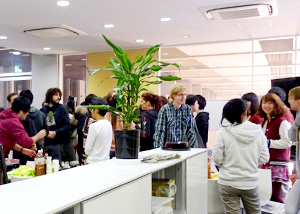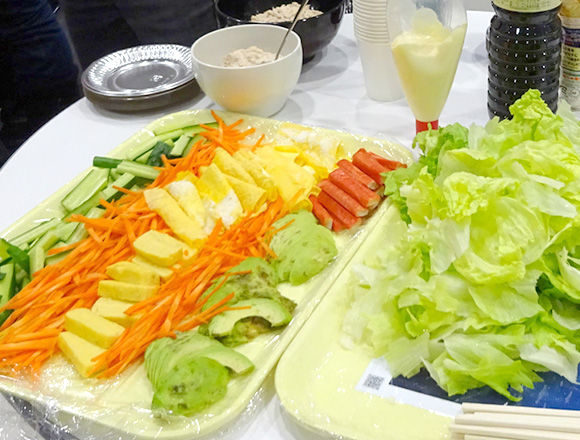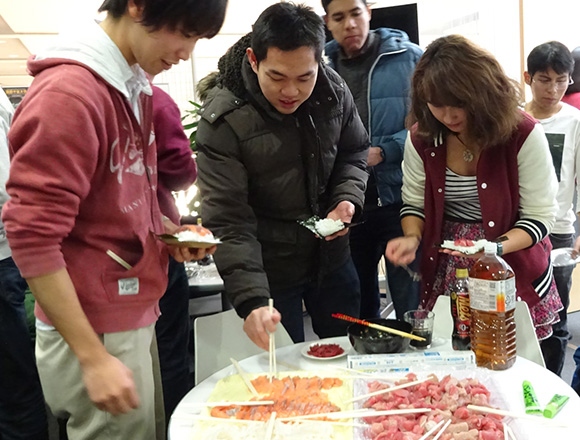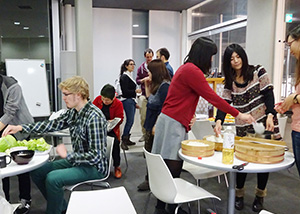- HOME
- Campus News: Temaki Sushi Party
Campus NewsTemaki Sushi Party


For the majority of foreigners, sushi is one of the symbol of Japanese food. However, in Japan, there are other types of sushi besides the clump of rice topped with a slice of raw fish that is commonly called nigiri sushi. The Division of International Education and Exchange of School of Engineering organized a temaki sushi party at the end of last year.

Temaki sushi, also known as hand-rolled sushi, is a popular casual Japanese food. The conelike form of temaki incorporates rice, specially prepared seaweed called nori, and a variety of fillings known as neta. While temaki is rare at formal restaurants, it is popular at casual ones and at home, especially for parties. Making temaki is easy and fun, and is often used to introduce Westerners to the taste and experience of sushi.

In Japanese culinary tradition, the word sushi actually refers to the specially prepared rice which forms the base of all sushi dishes, ranging from nigiri sushi to plain bowls of rice with scattered toppings. In Japanese, the term maki refers to any type of sushi roll incorporating nori, while te means hand. While most maki sushi are rolled by hand to some extent, temaki is considered to be much more of a hands-on food, as it is prepared and eaten with the hands rather than using tools such as chopsticks and sushi mats.

Temaki starts with a sheet of nori, which is usually cut in half to make it more manageable. A small amount of sushi rice is scooped onto the nori, followed by neta of choice before being tightly rolled up into a cone which can be in the hand and dipped into sauces. Traditionally, temaki is eaten by hand, because it would be ungainly with chopsticks, and quickly, because the nori will start to soften and turn rubbery from the ingredients if allowed to sit too long. Temaki can be filled with any sort of neta imaginable: fresh fish, tempura vegetables, fresh vegetables, grilled tofu or fish, or even strips of fried eggs. Because of the casual handheld nature of the food, many families simply arrange a tray of neta, sushi rice, and nori, allowing family members and guests to make temaki rolls to taste. In addition to the filling, a variety of dipping sauces and condiments such as soy sauce, ponzu sauce, pickled ginger, and wasabi are set out.

When serving temaki in a party environment, make sure to keep an eye on the tray of ingredients to refill them as they start to run low. If you are using fish, whether cooked or raw, keep it separate from the vegetable ingredients and preferably chilled on ice to keep it fresh. Your guests will also benefit from a finger bowl next to the rice so that they can dip their fingers to prevent the sushi rice from sticking to them.
